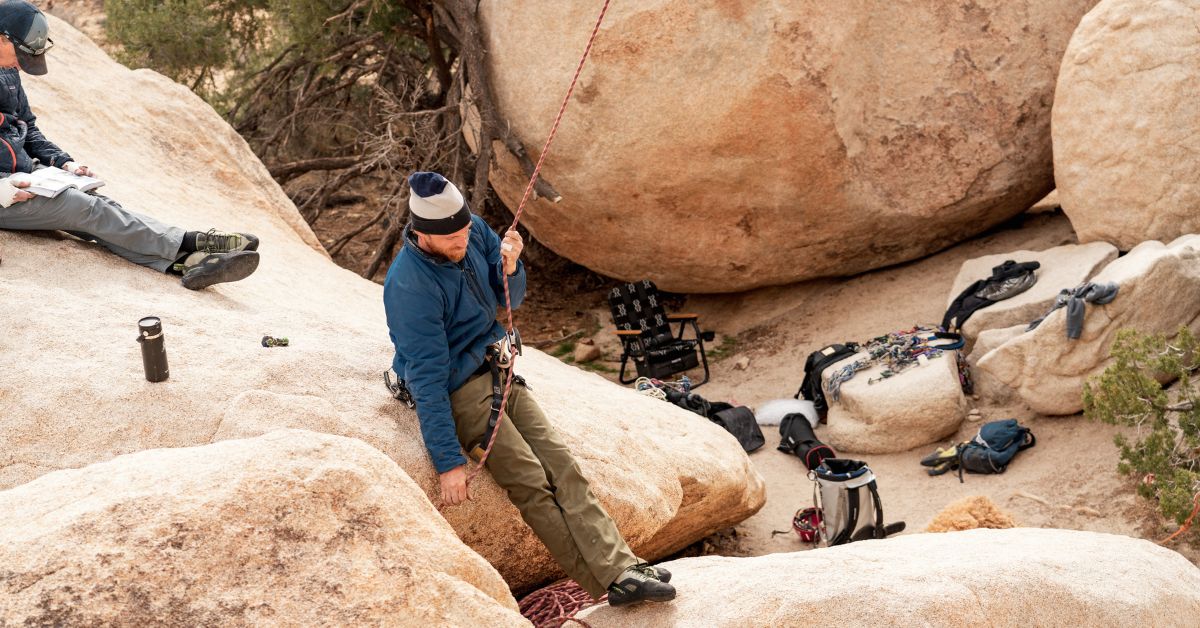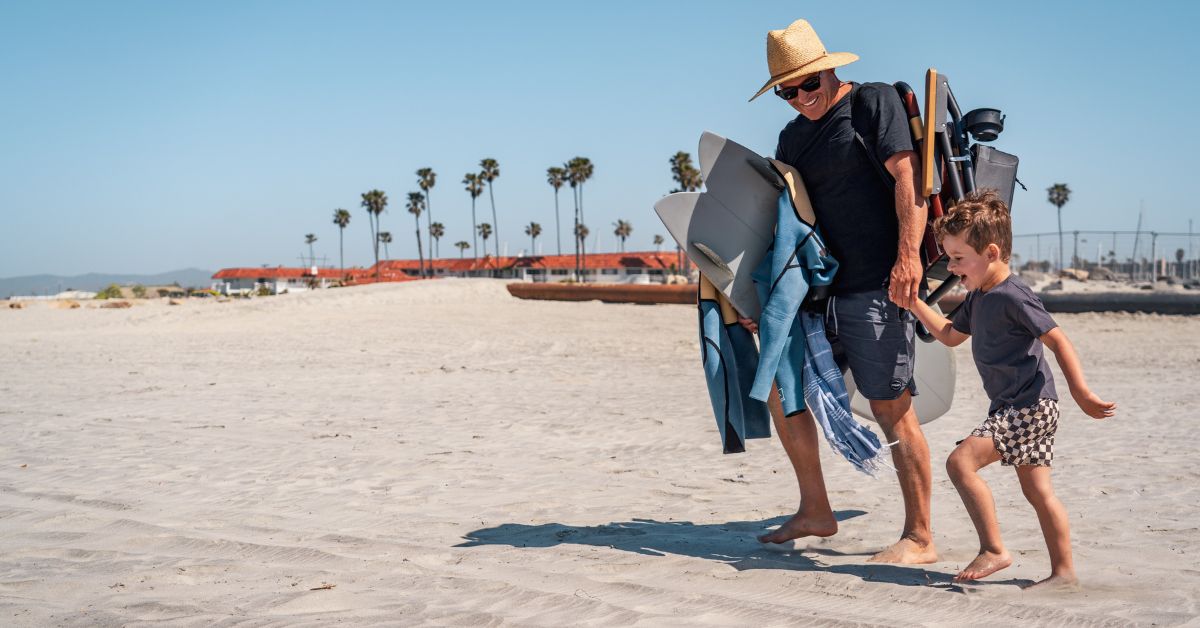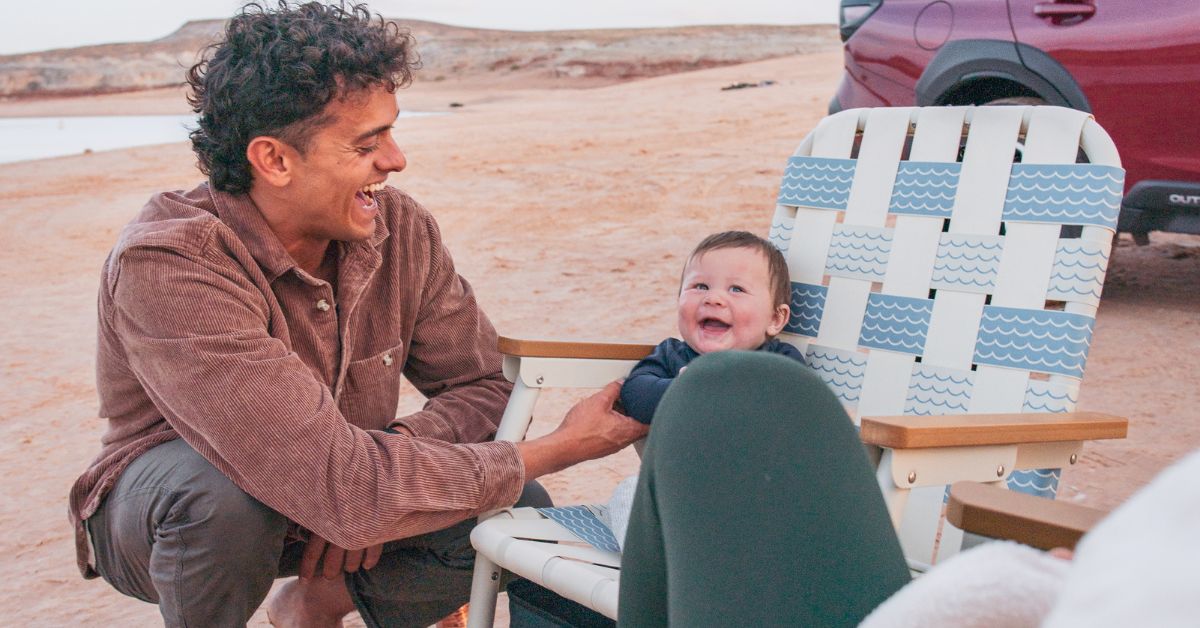Whether you’re pulling on plastic at your local climbing gym or heading outside for your first real send, knowing what to wear rock climbing can make or break your experience. The right gear will help you stay comfortable, safe, and focused on the wall—not on adjusting your pants or overheating halfway up a route.
This guide will break down what to wear while rock climbing both indoors and outdoors. We'll cover the basics, from fitting climbing shoes to moisture-wicking layers and climbing harness compatibility, so you can climb with confidence.
Indoor Climbing vs. Outdoor Climbing
If you're trying to figure out what to wear indoor rock climbing, you'll generally want lighter, stretchier layers that allow movement and breathability. Indoor walls are usually climate controlled, but you'll still work up a sweat.
For outdoor routes, you'll need to dress for the weather—which could mean anything from long sleeved base layers to quick-drying shorts, depending on the conditions.
No matter where you climb, the same general rule applies: wear clothing that doesn’t restrict your movement and helps you feel comfortable.
What to Wear for Rock Climbing Outdoors (Head to Toe)
1. Climbing Shoes
Start with a snug, tight fitting pair of climbing shoes. These are designed to help you stick to climbing holds and should be snug but not painful. For beginners, opt for neutral or moderate shoes with velcro closures.
2. Bottoms: Pants or Shorts
Look for lightweight, stretchy climbing clothes that won’t tear or ride up. Athletic leggings, joggers, or durable climbing pants are great for both men and women. If it’s hot, opt for shorts—just make sure they work with your climbing harness and don’t bunch.
3. Top Layers
Tanks, tees, or moisture wicking long sleeves all work. Prioritize wicking fabrics that help regulate temperature and reduce sweat. For outdoor climbs, bring a long sleeved base layer or windbreaker in case conditions change.
4. Jackets & Shells (For Outdoor Climbs)
A lightweight jacket that packs small is useful when temps drop or shade hits the crag. Look for breathable materials that layer easily over a base.
5. Harness & Accessories
Your climbing harness should fit securely over your clothing. Most gyms rent them, but if you climb often, it's worth investing in your own. Pair it with a chalk bag that clips to your harness or waist.
6. Optional: Hat & Sunglasses
Useful outdoors, especially on sunny belay days. Just skip the brimmed hat while actually climbing—it tends to get in the way.

Indoor Climbing Outfits: What to Wear Rock Climbing Gym Sessions
For indoor climbers wondering what to wear rock climbing gym, keep it simple:
- Stretchy pants or shorts
- Fitted athletic top
- Hair ties or headbands if needed
Indoor walls get warm quickly. Wear climbing outfits that keep you cool and confident as you climb.
Personal Preference Matters
There’s no one-size-fits-all answer for what to wear for rock climbing. Whether you're climbing indoors or outside, comfort and movement come first. Don’t stress about being overly technical—but avoid anything that could get caught, rip easily, or ride up under a harness.
Even when you’re not climbing, comfortable camp seating matters—especially on long days at the crag. A chair like the PARKIT Voyager makes rest periods more enjoyable, even if you're only spectating.
Specialized Climbing: What to Wear for Bouldering, Sport, and Trad
As you progress in your climbing journey, you’ll find that different styles of climbing call for slightly different gear setups. Here’s how to dress smart depending on the kind of climbing you’re getting into.
Bouldering
Whether indoors or at an outdoor boulder field, bouldering is all about freedom of movement. Since you’re not wearing a harness, you can opt for even more minimal gear. Go with flexible pants or shorts that won’t restrict your hips on high steps, and a breathable tank or tee.
Expect to fall (a lot), so durability helps. Bring a beanie for colder crag sessions and a crash pad for safety.
Sport Climbing
Sport climbing demands a bit more from your gear since you’ll be wearing a harness, carrying quickdraws, and climbing longer routes. Stick with performance fabrics that dry quickly and layer well. A streamlined chalk bag and shoes that balance comfort and performance go a long way. For sunny or exposed walls, don’t forget sun protection—long sleeves and UPF-rated hats can be game changers.
Trad Climbing
Trad climbers often spend long days on the wall and in varied weather conditions. Choose abrasion-resistant pants and breathable tops that can handle cracks, chimneys, and the occasional scramble. Layering is key—especially on alpine routes. A wind shell or lightweight puffy can be a lifesaver when temps drop or the wind kicks up.
No matter what type of climbing you’re getting into, remember: what you wear should serve the climb—not distract from it.





